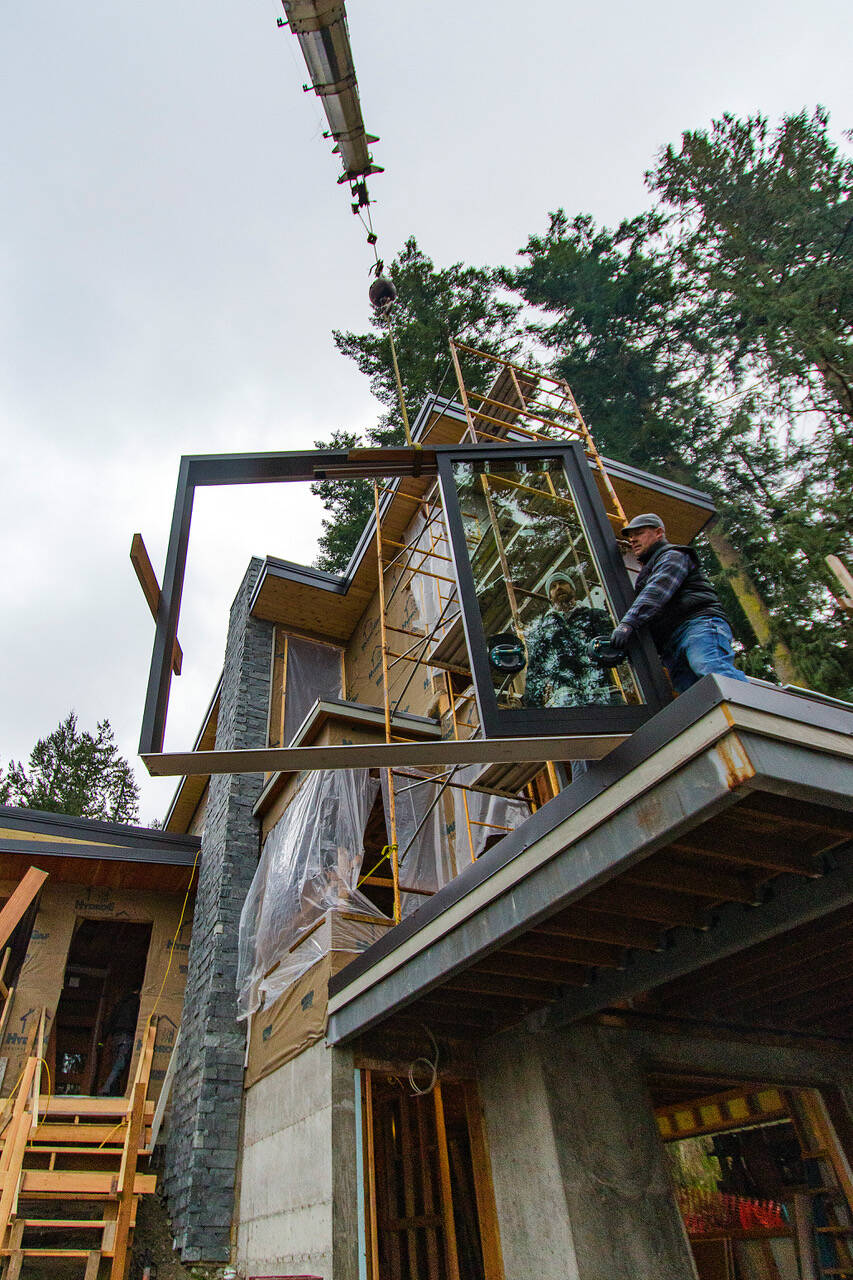Getting a building permit approved from Island County recently got a whole lot quicker.
Whidbey residents, builders and members of the Island County Board of Commissioners have long bemoaned the slow-moving process. Candidates for county office have regularly made promises to improve it in the past, with little change.
Until now.
A year ago, it was not unusual for a building permit request to take six to eight months to be fulfilled.Those applying now may be pleasantly surprised at how little time they’ll have to wait.
Mary Engle, the county’s planning director, said the current average turnaround time to receive a fully issued building permit is four to six weeks.
Engle cited quicker permit turnaround and workflow improvements in the building permit division as her top goals when the commissioners offered her the role of planning director in February 2021. The commissioners appointed her as the interim planning head in August 2020.
Since then, Engle has worked toward fully staffing her department and outsourcing the permit review work when necessary in order to loosen the logjam. While Engle was in the process of filling vacancies in the planning department, the commissioners approved the hiring of a temporary consultant whose sole duty was to review permit requests.
“When you don’t have enough people to do the jobs, you can’t keep up,” Engle said. “Not with the building boom we saw last year.”
She is hopeful that planning staff will be able to maintain the current rapid rate. As of Friday, permits submitted Jan. 20 were being pulled off the shelves for review.
In addition, some modern conveniences have been implemented. People can now submit permits online through the website portal. Previously, everyone was required to come into the county office with their submissions.
Those involved in the building industry have noticed significant changes.
Ben and Bill Criswell of Eagle Building Company on South Whidbey praised Engle’s leadership and said they believed the county is taking steps in the right direction.
“The current planning director and the current building official both inherited huge problems,” Ben Criswell said. “They inherited what I can only say is basically a nightmare, and they’ve worked diligently to address and strategize and move through to where we’re now seeing building permit lead times consistently come down.”
High turnover of county planning staff and a lack of written policy – which opens the door to a variety of different interpretations – have been the biggest contributing factors to the permit gridlock, in their opinion.
A year ago, the building company waited an average of 17 weeks before receiving a building permit. Now, that has been halved to just eight weeks. At least that’s the case with platted lots with standard soils, where no variance is requested.
“As soon as you say ‘critical area,’ all bets are off,” Ben Criswell said. “As soon as you say ‘steep slope’ or ‘bluff setback’ or ‘shoreline,’ everything changes.”
Matthew Swett of Taproot Architects agreed that certain situations can bog the permitting process down more than others. He also said that the county has improved the speed of its permitting process – although working with municipalities, such as Langley, has been considerably quicker.
“Overall, it feels like it really improved considerably,” Swett said of Island County’s process. “The level of communication is much better. The real palpable thing is the staff will actually email you or call you after a certain period of time and let you know when something is almost ready.”
According to Meredith Penny, Langley’s director of community planning, a typical building permit takes two to three weeks to obtain.
In Oak Harbor, that timeframe is just seven days for single-family residences and one month for commercial applicants, Communications Manager Sabrina Combs said.
Ben Criswell said it is important to have a swift permitting process, especially when interest rates, inflation and building material prices are all increasing. Building materials that cost $35,000 a year ago are now priced at $50,000.
“Every month that goes by is costing that person more and more money,” he said, adding that a bank will not close a construction loan until a building permit is issued.
“If you can’t guarantee or you can’t even accurately estimate when this permit is going to be written up,” Bill Criswell said, “that kind of just leaves that whole thing in limbo when you’re trying to actually produce a realistic schedule for banks and title companies and subcontractors.”
Some of their clients have nearly faced homelessness. On multiple occasions, permit delays have hindered the start of a project so much that the homeowner no longer has a place to stay in the meantime. In those cases, the company has offered the clients stays in vacation rentals. They have two projects that are currently still two months behind, in part because of slow permits.
Like many other builders on the island, the Criswells have experienced an increase in demand for homes since the beginning of the pandemic.
To ensure that the county’s permitting process continues to run smoothly, the father and son suggested that county staff establish some written policy to keep up with the ever-changing nature of the building industry and its regulations, something they haven’t seen during the past 17 years.
“It’s so hard to play the game when the rules keep changing,” the younger Criswell, Ben, said.
In addition, they recommended the county address its issue of constantly rotating staff by striving for employee retention, which could include offering more competitive salary and benefit packages or conducting a wage study based on Whidbey’s cost of living and comparable jurisdictions.
“Five months was catastrophic,” Ben Criswell said of the previous wait time for a permit. “Eight weeks seems like a vacation. But it can be four weeks. I know it can. I’ve seen it.”



